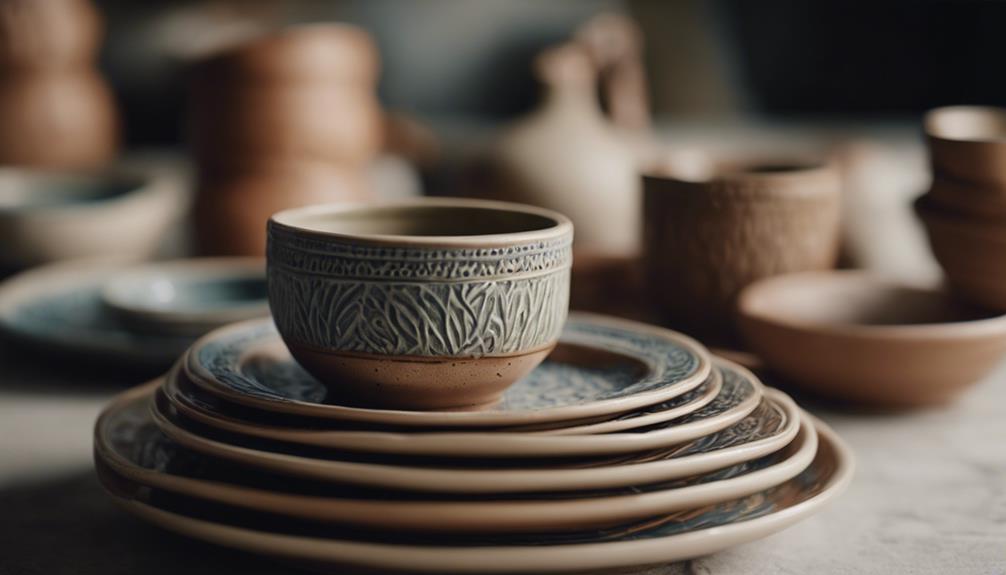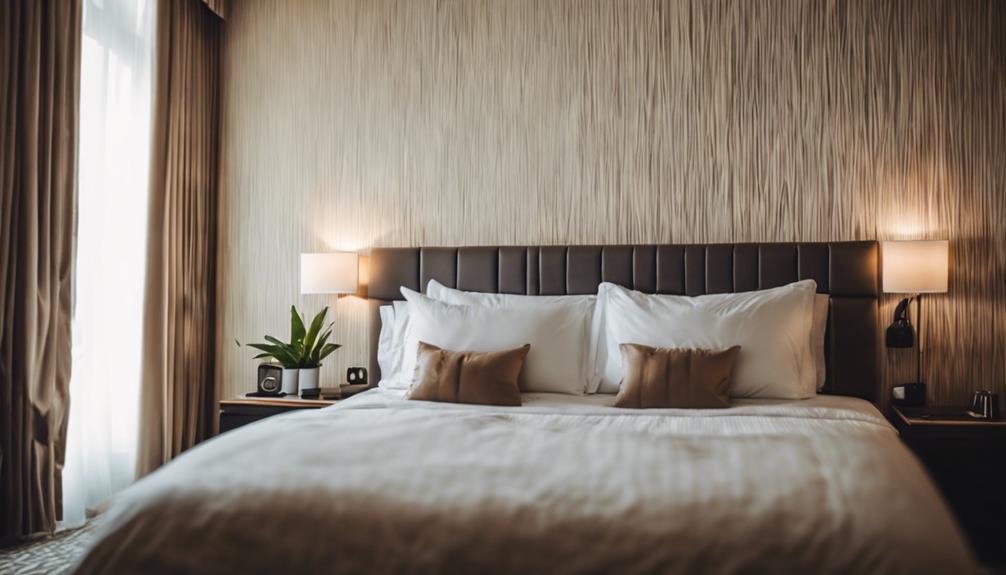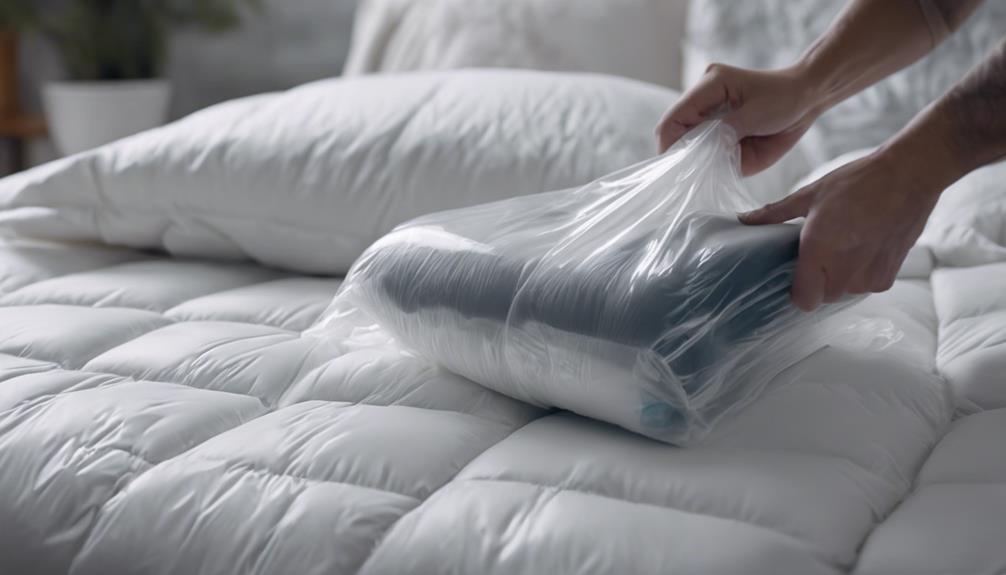Between 7-9 months of age, babies typically begin seeking reassurance and comfort, signaling a need for a security object such as a favorite toy or blanket. These comforters play a crucial role in providing a sense of security during separation anxiety, contributing to emotional well-being by encouraging healthy attachments. Introducing a comforter between 7 and 10 months is recommended by experts to help manage separation anxiety, promote emotional security, and assist in navigating milestones. This establishes positive sleep associations and aids in developing coping mechanisms and self-soothing skills during challenging phases. Recognizing the importance of comfort objects can greatly benefit your baby’s emotional well-being and independence.
Key Takeaways
- Introduce comforters between 7-10 months for emotional security and positive sleep associations.
- Comforters assist during separation anxiety phase, promoting independence and confidence.
- Supervised introduction ensures safe sleep environment before leaving comforters unattended in the cot.
- Comforters help manage separation anxiety, providing stability and soothing during challenging times.
- Comforters aid in developing coping skills, self-soothing, and smooth progressions through milestones.
Signs of Attachment and Comfort

When babies begin to exhibit signs of seeking reassurance and comfort, typically around 7-9 months, they may indicate a need for a comforter. Babies showing signs of attachment often seek out their comfort object for security and emotional support. This attachment helps them self-soothe during times of separation anxiety or when facing new and unfamiliar situations. The comforter serves as a source of reassurance, providing a sense of predictability and stability in their environment.
Recognizing these signs of attachment is vital for understanding your baby's emotional development. By introducing a comforter at this stage, you can support their need for security and comfort. Observing how your baby interacts with their comfort object can give you valuable insights into their emotional well-being. Encouraging this attachment can foster a sense of security and help them navigate the world with more confidence. Remember, signs of attachment are normal and healthy indicators of your baby's growing emotional resilience.
Benefits of Introducing a Comforter

Introducing a comforter to a baby can greatly enhance their emotional security and comfort in various situations, aiding in their overall well-being. Here are some key benefits of introducing a comforter:
- Sleep Associations: Comforters help babies establish positive associations with sleep, signaling bedtime and promoting relaxation for better sleep patterns.
- Emotional Security: A comforter provides a sense of emotional security, offering a familiar and comforting presence that can help soothe anxieties, especially during times of change.
- Smooth Progressions: By providing a consistent source of comfort, a comforter can assist babies in progressing through changes and developmental milestones more smoothly.
- Healthy Attachment: Babies can develop healthy attachments to their comforter, learning to self-soothe and regulate their emotions, which contributes to their overall emotional well-being.
Introducing a comforter to your baby can foster feelings of comfort and security, aid in emotional regulation, and improve overall sleep quality, ultimately promoting a sense of well-being during both daytime activities and nighttime rest.
Recommended Age for Comforter Introduction
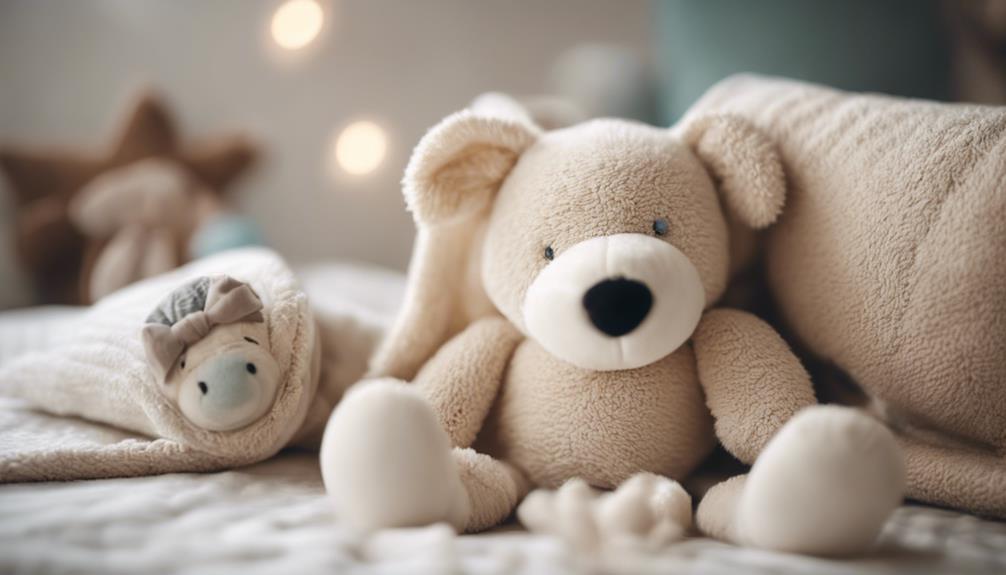
After underscoring the benefits of a comforter for a baby's emotional security and overall well-being, it's vital to consider the recommended age for introducing this comforting item. Experts suggest that the ideal time to introduce a comforter to a baby is between 7 and 10 months of age.
This timeframe aligns well with the period when babies typically start experiencing separation anxiety, making a comforter a valuable tool in providing comfort and security during this developmental stage. It's generally safe to leave a comforter unattended in the cot from around 7 months onwards, as babies at this age are more capable of interacting with objects in their sleep environment.
However, it's important to note that the Australian Competition and Consumer Commission (ACCC) advises against unsupervised soft toys in the cot until 12 months of age due to safety concerns. Thus, when introducing a comforter to your baby between 7 and 10 months, make sure that it's done in a supervised manner to promote a safe sleep environment.
Promoting Independence and Soothing
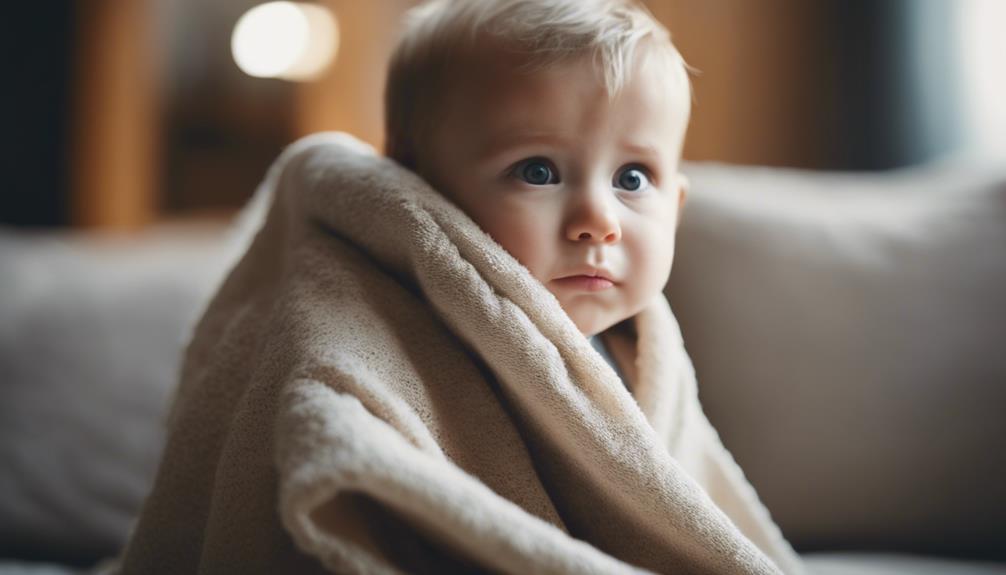
To aid in promoting independence and soothing for babies, introducing a comforter around 7-9 months can be beneficial. Comforters play an essential role in helping babies self-soothe and develop coping skills. Here are some key points to keep in mind:
- Security Blanket: Comforters offer babies a sense of security, which is vital for their emotional well-being.
- Independence: By introducing a comforter, babies can learn to self-soothe, promoting independence and confidence.
- Soothing Changes: Comforters assist babies in managing changes and milestones by providing reassurance and familiarity.
- Bedtime Routine: Incorporating a comforter into the bedtime routine can help soothe babies, making it easier for them to settle down and sleep.
Managing Separation Anxiety

When babies reach around 8 to 10 months, signs of separation anxiety may emerge, making it important to address their need for comfort and reassurance during this developmental stage.
Introducing a comforter around 7-10 months can help ease separation anxiety as babies seek reassurance and security. Comforters serve as soothing tools for infants experiencing separation anxiety, aiding in comfort and self-soothing.
Parents and sleep consultants recommend introducing a comforter during the peak of separation anxiety to provide additional comfort and security for the baby.
During this stage, it's vital for parents to offer consistent support and understanding to help their little ones navigate this challenging phase.
By incorporating a comforter into the baby's routine, parents can help create a sense of stability and comfort, which are essential for managing separation anxiety effectively.
Frequently Asked Questions
When Should I Introduce a Comforter to My Baby?
We introduce a comforter to our babies around 7 to 10 months when seeking reassurance and comfort. It's the ideal time as separation anxiety often kicks in between 8 to 10 months. Avoid introducing a comforter to babies under 6 months, as they may not fully benefit.
From around 7 months, it's safe to leave the comforter unattended in the cot. Remember, unsupervised soft toys in the cot are best avoided until your baby reaches 12 months.
What Age Do Babies Need Bedding?
Babies typically don't need bedding such as blankets or comforters until after 12 months of age. It's recommended to introduce a thin blanket or comforter around 18 months to reduce the risk of entanglement. Waiting until at least 18 months helps guarantee safe sleep practices.
Soft bedding should still be avoided even after 18 months to prevent suffocation risks. Keeping the crib bare with only a fitted sheet until the baby is older reduces the risk of SIDS and other sleep-related hazards.
Can 1 Year Old Have Comforter?
When considering if a 1-year-old can have a comforter, it's crucial to recognize that introducing one at this age can provide emotional support and encourage self-soothing.
Many children at 1 year old are capable of forming attachments to comfort items like a blanket or soft toy.
Supervised use of a comforter can promote feelings of security and comfort during changes, bedtime, or stressful situations, as long as it's age-appropriate and free of choking hazards.
Do Babies Sleep Better With a Comforter?
Babies can sleep better with a comforter, as it provides soothing comfort and a sense of security. Introducing a comforter around 7-10 months can help babies self-soothe and feel more settled during sleep.
Many parents find that their babies sleep more soundly with a comforter, thanks to the familiarity and comfort it offers. The presence of a comforter can contribute to better sleep quality for babies, aiding in their overall restfulness.
Conclusion
To sum up, introducing a comforter to a baby can help promote feelings of security and independence, while also soothing them during times of separation anxiety. By recognizing the signs of attachment and comfort, parents can determine when their baby may benefit from having a comforter.
It's recommended to introduce a comforter around 6-12 months of age, but ultimately, each baby is unique and may have different needs. Providing comfort and support can help babies navigate their emotions and develop a sense of security.

